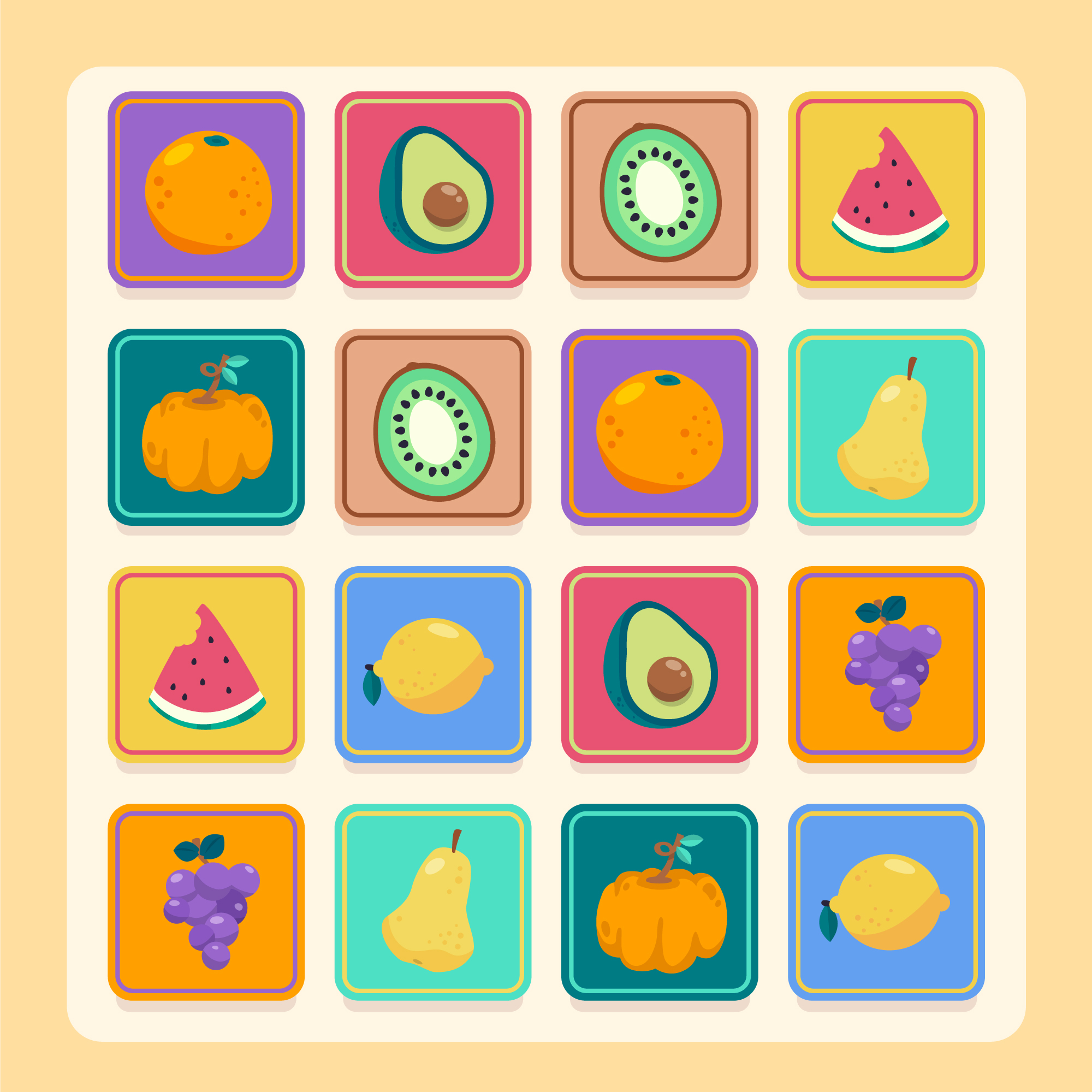Are your little ones hungry for knowledge? Dive into a world of food riddles that will tickle their taste buds and challenge their minds. Food riddles for kids are like a delicious buffet of brain teasers, sprinkled with fun and excitement. These clever riddles not only make meal times more engaging, but also teach your children about the importance of a balanced diet. With every riddle solved, they’ll develop problem-solving skills and learn about different types of food. So, get ready to spice up their learning experience and nourish their young minds with the delightful world of food riddles. Let’s dig in!
Benefits of Food Riddles
Food riddles offer numerous benefits for kids, as they encourage you to think about the different types of food you eat and promote awareness of the nutritious benefits they provide. Solving food riddles can help promote healthy eating habits by making meal times more exciting and engaging. It enhances problem-solving skills as you try to figure out the answers to the riddles.
Examples of food riddles include the cucumber, banana, tomato, lettuce, and carrots. These riddles introduce you to different types of food and challenge you to think about their characteristics.
Food riddles are important for kids because they encourage creativity and foster a positive attitude towards nutritious food. By engaging in this fun and educational activity, you can develop a deeper understanding of food diversity and the importance of a balanced diet.
There are different types of food riddles, including those that involve different types of food, rhyming riddles, and ones that engage children in a fun and educational way.
To enhance the learning experience, you can use a printable worksheet that provides a hands-on activity. This worksheet allows for easy sharing and reference, making it a convenient tool for parents and educators. Solving food riddles on a worksheet can make the learning process more interactive and enjoyable.
Examples of Food Riddles
Riddles about various types of food can be a fun and engaging way for kids to learn about different fruits, vegetables, and other food items. Here are some examples of creative, nutritional, interactive, fun, and challenging food riddles that will surely stimulate their minds:
- “I’m crunchy and green, often used in salads and sandwiches” – Answer: Cucumber
- “I’m a fruit that’s yellow and sweet, often found in pies and smoothies” – Answer: Banana
- “I’m a vegetable that’s red and round, often cooked in soups and stews” – Answer: Tomato
- “I’m a green vegetable that’s crunchy to bite, often used in salads and wraps” – Answer: Lettuce
- “I’m brown and crunchy, shaped like a stick, often served with dip” – Answer: Carrots
These riddles not only challenge children’s thinking abilities but also promote awareness of the nutritional benefits of different foods. By engaging in these interactive riddles, kids can have fun while expanding their knowledge about various food items. So, gather the little ones and let the food riddle adventure begin!
Importance of Food Riddles for Kids
Now let’s explore why food riddles are important for kids. Food riddles play a crucial role in promoting healthy eating habits by encouraging children to think about the different types of food they consume. By solving riddles about fruits, vegetables, and other nutritious foods, kids become more aware of the benefits these foods provide to their bodies. These riddles also enhance vocabulary skills as children learn new words to describe various food items. Additionally, food riddles foster creativity and imagination as kids engage in playful thinking to solve the puzzles. This creates a positive learning environment where children can have fun while expanding their knowledge about different foods. Moreover, food riddles encourage critical thinking and problem-solving skills as kids analyze the clues and come up with the correct answers. Overall, incorporating food riddles into children’s learning experiences not only makes meal times more exciting and engaging, but also helps them develop a lifelong appreciation for nutritious food.
Types of Food Riddles
There are various types of food riddles that can engage and challenge kids. Food riddles and cognitive development go hand in hand, as they stimulate critical thinking skills and problem-solving abilities. Making meal times fun with food riddles can create a positive association with eating and encourage children to try new foods. Using food riddles to teach about healthy eating promotes awareness of nutritious benefits and the importance of a balanced diet. Food riddles also have a positive impact on language development, as they introduce new vocabulary and encourage descriptive language. Furthermore, food riddles spark children’s creativity, as they have to think outside the box to come up with the answers. So, whether it’s guessing the ingredients in a recipe or identifying different types of fruits and vegetables, food riddles provide a playful way to enhance cognitive development, make meal times more enjoyable, teach about healthy eating, boost language skills, and nurture children’s creativity.
Printable Worksheet
Enhance your child’s learning experience with a printable worksheet. This fun activity allows your child to learn through play, expand their vocabulary, and develop critical thinking skills. The printable worksheet provides a hands-on approach to learning, making it engaging and exciting for your child. It also promotes family bonding as you can solve the riddles together and celebrate each correct answer.
To give you an idea of what the printable worksheet may look like, here is a table with three columns and three rows:
| Riddle | Answer | Clue |
|---|---|---|
| 1. I’m a fruit that’s yellow and sweet, often found in pies and smoothies. | Banana | Monkeys love me! |
| 2. I’m a vegetable that’s red and round, often cooked in soups and stews. | Tomato | I’m also a fruit! |
| 3. I’m a green vegetable that’s crunchy to bite, often used in salads and wraps. | Lettuce | I’m leafy and refreshing! |
The printable worksheet is easily accessible and can be printed and shared with multiple children. It provides a comprehensive answer sheet for reference, allowing your child to check their answers and learn from their mistakes. This encourages independent thinking and self-correction, fostering a sense of accomplishment when all the answers are correct.
Importance of Answer Sheet
To fully benefit from the printable worksheet, it is important to understand the significance of having an answer sheet. Here are five reasons why the answer sheet is crucial:
- Encouraging independence: The answer sheet allows children to check their answers on their own, promoting a sense of independence and self-reliance.
- Promoting problem-solving skills: By comparing their answers with the answer sheet, children can identify their mistakes and learn from them, enhancing their problem-solving abilities.
- Enhancing learning experience: The answer sheet provides a comprehensive reference for children to understand the correct answers, improving their overall learning experience.
- Fostering self-correction: With the answer sheet, children have the opportunity to correct their mistakes, fostering a habit of self-correction and continuous improvement.
- Reinforcing a positive attitude towards learning: When children see that their answers match the ones on the answer sheet, it reinforces a positive attitude towards learning and boosts their confidence.
Having an answer sheet not only helps children with their food riddles but also encourages independence, promotes problem-solving skills, enhances the learning experience, fosters self-correction, and reinforces a positive attitude towards learning. So don’t forget to include the answer sheet when using the printable worksheet!
Additional Food Riddles
If you’re looking for more food riddles to engage and challenge your kids, try these additional riddles that will expand their knowledge and keep them entertained. Encourage their taste exploration and food preferences with these creative riddles. Not only will they have fun solving them, but they will also enhance their problem-solving skills and promote healthy eating habits.
Challenge their creative thinking with riddles like: “I’m a vegetable that’s green and leafy, often used in salads and wraps. What am I?” (Answer: Lettuce) or “I’m a fruit that’s small and red, often used in jams and jellies. Can you guess what I am?” (Answer: Strawberry). These riddles will spark their imagination and encourage them to think outside the box.
Sugar and Oatmeal
As we continue exploring the various types of food riddles for kids, let’s now delve into the delightful world of sugar and oatmeal. These two ingredients have the power to create some of the most delicious treats, like chocolate chip cookies. Imagine sinking your teeth into a warm, gooey cookie with melty chocolate chips and a hint of sweetness from the sugar. It’s a sensory experience that can’t be beat. But taste preferences go beyond just cookies. Trying new flavors, like adding cinnamon to oatmeal or experimenting with different types of sugar, can open up a whole new world of culinary delights. So go ahead, embrace the magic of sugar and oatmeal, and let your taste buds guide you on a journey of flavor exploration. Who knows, you might discover a new favorite treat that will leave you craving for more.
Fish Varieties
Now let’s dive into the world of fish varieties, exploring the different types of fish and their unique characteristics. Fish not only come in different shapes, sizes, and colors, but they also offer a wide range of health benefits. Eating fish is known to be good for your heart and brain because it is a rich source of omega-3 fatty acids. These essential nutrients can help reduce the risk of heart disease and improve cognitive function.
When it comes to fishing, it’s important to practice sustainability. This means using fishing methods that ensure the long-term viability of fish populations and protect the delicate balance of marine ecosystems. Some sustainable fishing practices include using selective fishing gear, avoiding overfishing, and protecting habitats. By fishing responsibly, we can help preserve fish populations for future generations to enjoy.
There are many different ways to cook fish, from grilling and baking to frying and steaming. Each method brings out unique flavors and textures in the fish. Popular fish dishes around the world include sushi in Japan, fish and chips in England, ceviche in Peru, and grilled salmon in the United States.
Riddles About Creatures
Let’s explore riddles about creatures, specifically aquatic animals, to continue our discussion on food riddles for kids. These riddles will not only entertain you, but also teach you about the characteristics of these fascinating creatures. Get ready to dive into the underwater world and test your knowledge!
- I am slimy and slippery, with gills on my side. People love to eat me, especially when fried. (Answer: Fish)
- I am a shell with a pearl, living in the sea. I am often served raw, on a plate for you and me. (Answer: Oyster)
- I am long and spiky, with a tough outer shell. Crack me open to find a delicious treat, oh what a smell! (Answer: Lobster)
- I am round and squishy, with tentacles all around. I sting my prey with venom, then devour them without a sound. (Answer: Jellyfish)
- I am a creature with eight arms, a master of disguise. My ink can create art, and my meat is quite a prize. (Answer: Squid)
These riddles not only challenge your brain, but also help you build your vocabulary by describing the unique characteristics of these aquatic creatures. So, dive into the world of riddles and discover the wonders of the sea while exploring different food textures and encouraging healthy eating habits.



